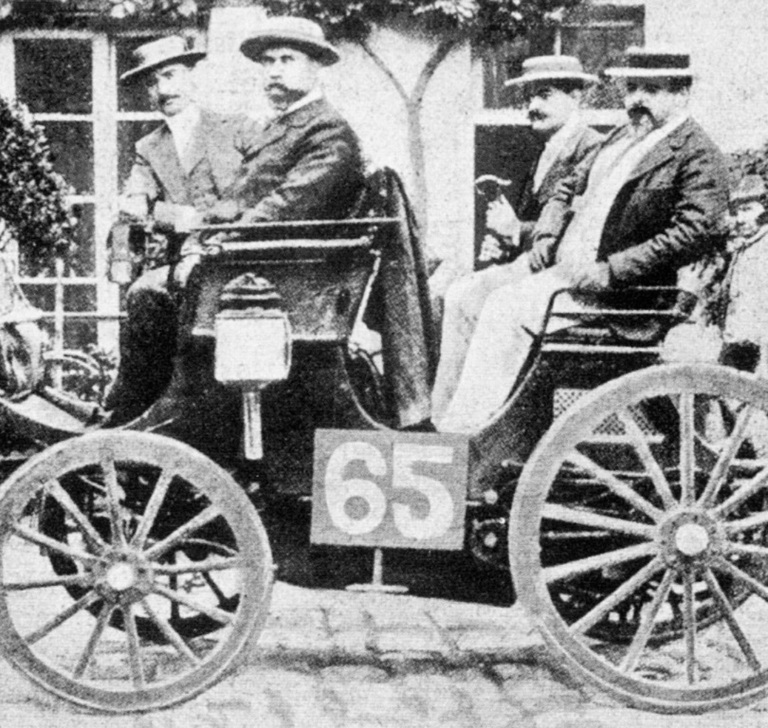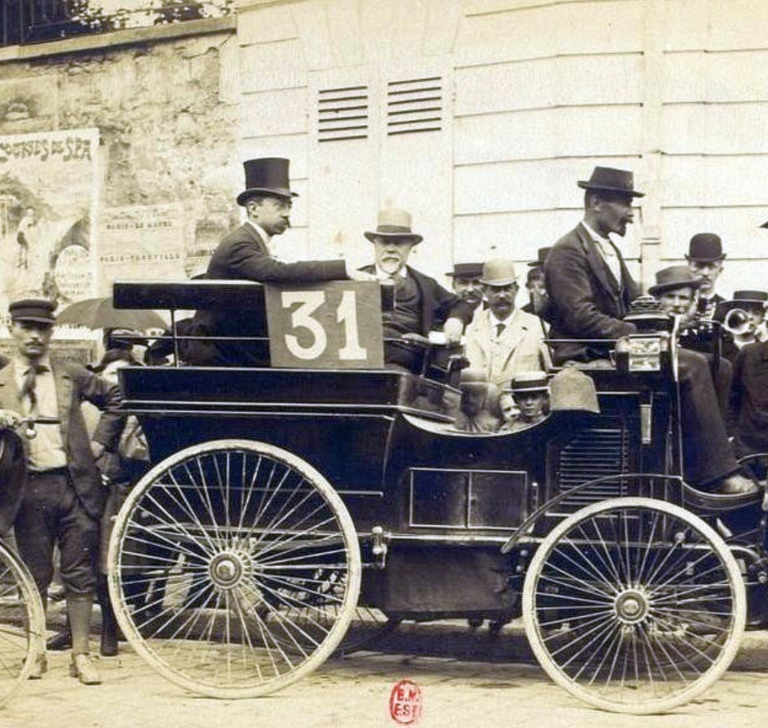Paris stands not only as a cultural and artistic epicenter but also as a pioneer in car racing
In the history of automotive racing, Paris stands not only as a cultural and artistic epicenter but also as a pioneer in car racing. While it may surprise some that the French are known for their passion for racing, the truth is that France played a pivotal role in the early development of this sport.
It all began in the winter of 1894 when the director of the Parisian newspaper Le Petit Journal conceived a revolutionary competition: the first car race in history. With a tempting prize of 10,000 francs, the contest drew 26 brave competitors, including renowned manufacturers like Panhard et Levassor and a small company named Peugeot.
These early automobiles challenged the streets of Paris in a series of qualifying laps that captured the public’s imagination. The event, originally planned to cover 78 miles along the River Seine to Rouen, transformed into a celebration of French engineering and a showcase of nascent automotive technology.

The climax: the official race at Porte Maillot
Although the competition began with 26 cars, each averaging around 10 miles per hour, several competitors were eliminated before the grand race. Following the initial route, each day a group of racers explored a different neighborhood of Paris. The event quickly gained popularity by word of mouth, attracting an increasing number of spectators who gathered to witness the machines racing through the city streets.
On Sunday, July 22, 1895, the climax came when the 21 vehicles that survived the initial rounds lined up at Porte Maillot for the official start of the race. The course, which included strategic stops for a luxurious lunch and technical adjustments to the vehicles, tested both the endurance of the drivers and the reliability of their machines.
In a dramatic finish, Count de Dion’s steam tractor, known for its power and robustness, crossed the finish line in Rouen first. However, due to a rule imposed by editor Giffard to promote the autonomy of automobiles, the Count was disqualified for having mechanics on board. Thus, the honor of being recognized as the official winner fell to Albert Lemaître of Peugeot, who arrived in second place without breaking the established rules.
This event not only marked the official beginning of organized car racing but also showcased to the world the growing ability of automobiles to compete and excel in demanding challenges. Since then, France has continued to be a stronghold of motorsport, with iconic events like the 24 Hours of Le Mans perpetuating its legacy as a global powerhouse in this thrilling sport.


Truck drivers are at high risk of developing diabetes
About 11% of the adult population meets the criteria for prediabetes, and there is a particular group at high risk: truck drivers. Diabetes rates in

Starting in trucking: required permits, registrations, and compliance
Are you a new carrier? This is what you need to know about permits, registration, and compliance. The trucking industry can be quite challenging for

Alberta Clipper Brings an Early Polar Blast: A Critical Alert for Drivers
The Alberta Clipper is sweeping across the country with fast-moving Arctic air, sharp temperature drops, and dangerous road conditions that demand heightened attention from all professional drivers.

American manufacturers trigger truck “dumping” investigation
Foreign trailer manufacturers under investigation for alleged “dumping” in the U.S. The U.S. truck market is at the center of a trade dispute. After domestic

ATRI Warns: Litigation Is Rising Across the U.S. Trucking Industry
A new report from the American Transportation Research Institute (ATRI) reveals how escalating litigation, higher legal costs, and mounting insurance pressures are reshaping the U.S. trucking industry. The findings mark a critical moment for motor carriers, insurers, and logistics stakeholders who must understand the changing legal environment — and the increasingly strategic role of strong insurance partnerships.

FMCSA says no to hours-of-service exemptions
FMCSA rejects two requests for exemptions to hours-of-service rules for commercial drivers. The Federal Motor Carrier Safety Administration (FMCSA) has denied two exemption requests related
